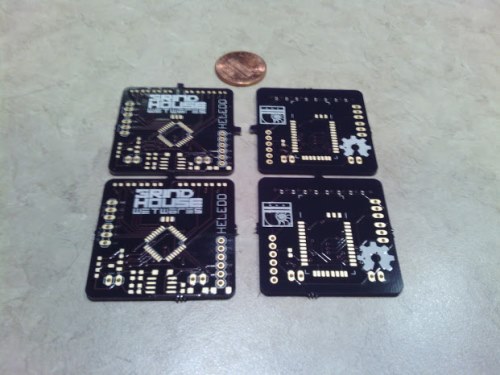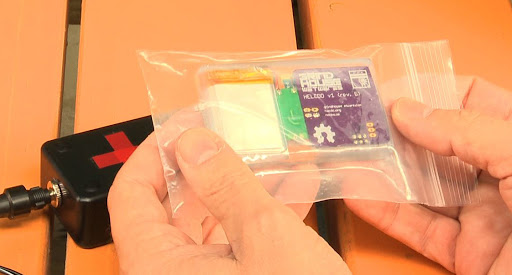Ever think about slicing your arm open, implanting an enormous chip under the skin, and then sewing yourself back up?
Tim Cannon, a biohacker from Pennsylvania and founder of the biohacking website Grindhouse Wetware, actually did this.

Tim Cannon's arm with the implanted device.
As a biohacker, Cannon’s interest is designing and installing do-it-yourself body enhancements in order to merge man and machine.
In his latest project, he had a body modification specialist implant the Circadia 1.0, a rather large device that can read biomedical data and transmit it to the Internet via Bluetooth.
On the Grindhouse Wetware website, Cannon says that with the device, he can collect weeks or months of medical data instead of having to go to the doctor.
Since a surgeon couldn’t implant the device because it’s not approved by medical professionals, Cannon sought out a body modification specialist who implanted the chip. If that doesn’t sound painful enough, he also couldn’t receive any anesthesia for the procedure.

The Circadia 1.0 device.
The open-source device can be controlled completely by Cannon, but since it is compatible with Android devices, his arm is always susceptible to being hacked. However, being hacked isn’t really a concern of his. “I’m really not afraid of that. I’m a hacker. I’m doing this, it’s fun. It’s meant to capture people’s imaginations,” Cannon told Motherboard in an interview.

The Circadia before implantation.
Currently, the device has three built-in LEDs that act as status lights to light up the tattoo on Cannon’s arm.
Any messages, warnings, or texts can be sent from an Android phone to Circadia, and the LEDs display them through the skin.

The finished product. The Circadia implanted under Cannon's skin.
For now, the implant measures only his body temperature, but Cannon and his co-workers are developing a pulse-monitoring device that they are shrinking to the size of the Circadia for a future project.
Watch Cannon’s videos to learn more about the device.
Advertisement
Learn more about Electronic Products Magazine





